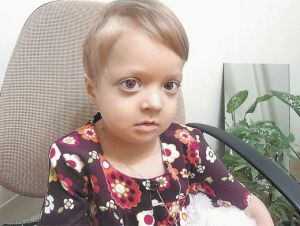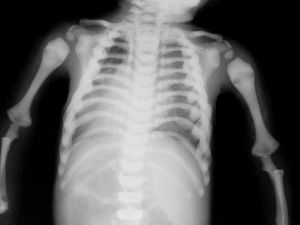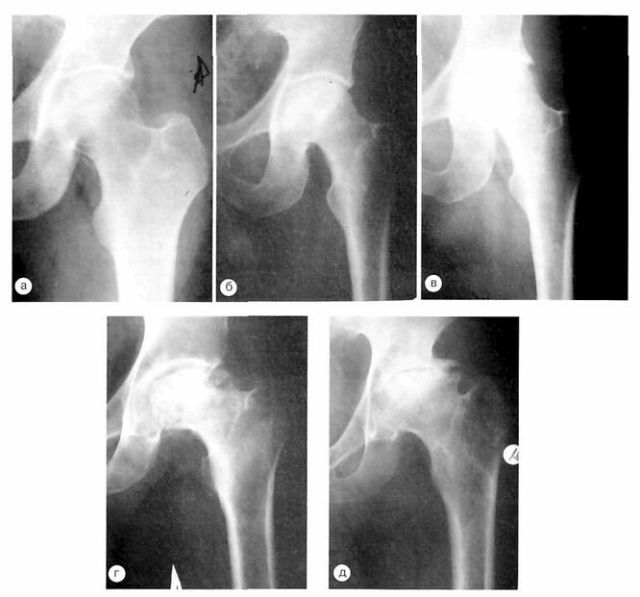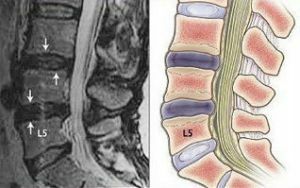 A rare congenital anomaly of bone tissue, characterized by a pronounced densification of the bones, was first described in 1904 by the German surgeon Albers-Schoenberg.
A rare congenital anomaly of bone tissue, characterized by a pronounced densification of the bones, was first described in 1904 by the German surgeon Albers-Schoenberg.
Bones in this disease become dense, heavy. The cut of the affected bone is a homogeneous smooth surface that looks like marble.
Hence the second pathology name - marble disease.
Contents of the article
- Causes of pathology?
- Characteristic manifestations of
- disease Signs of the disease according to
- development stages Diagnostic measures
- The only chance of recovery is transplantation
- Preventive measures
- Is there a chance?
Causes of pathology?
Marble disease or osteopetrosis( other names of hyperostotic dysplasia, Albers-Schoenberg disease, congenital osteosclerosis) is a rare congenital pathology of the musculoskeletal system characterized by excessive formation of bone tissue.
With congenital osteosclerosis, there is condensation and simultaneous fragility of bones, functional insufficiency of hematopoiesis functioning in the bone marrow.
In the body of a healthy person, the processes of bone tissue formation by osteoblasts( cells that produce bone tissue) and its resorption by osteoclasts( cells that destroy bone tissue) are in an equilibrium state.
Marble disease is accompanied by impaired osteoclast function. In this case, the number of osteoclast cells can be normal, elevated or decreased.
The exact mechanism for the development of pathology has not yet been fully understood. It is only proved that 3 genes responsible for the formation of bone and hemopoietic tissue take part in the development of the disease.
The result of gene disorders in osteopetrosis is a decrease in bone resorption caused by a deficiency of the enzyme carbonic anhydrase in osteoclasts.
At the same time, the intensity of bone formation processes with osteoblasts does not decrease, which leads to densification of bone tissue and its excess.
For what reason there are violations of genes is not known. But it is definitely established that there is a hereditary predisposition to pathology: in most cases, hyperostotic dysplasia occurs in relatives.
Characteristic manifestations of
disease The gradual displacement of bone marrow by a dense bone( a substance contained inside the bone and participating in the  hematopoiesis processes) leads to the development of thrombocytopenia, anemia, hematopoies outside the bone marrow - in the liver, lymph nodes, spleen,their increase.
hematopoiesis processes) leads to the development of thrombocytopenia, anemia, hematopoies outside the bone marrow - in the liver, lymph nodes, spleen,their increase.
The main symptoms of marbled disease are increased density and simultaneous fragility of bones, a tendency to fracture( especially fractures of the femur are especially noted).
The most common signs of the disease are:
- enlargement of the liver, spleen, lymph nodes;
- hypochromic anemia;
- hydrocephalus;
- impaired visual function, right up to blindness( caused by compression of the optic nerve).
Signs of the disease according to the stages of development of
By the time of development of pathology, osteopetrosis is classified into two forms:
- The early form of of marbling disease develops in children, is characterized by malignant course and often ends in a lethal outcome.
- The late form of is observed in adulthood, it is easier, usually asymptomatic, diagnosed by the results of X-ray studies.
With early form of osteopetrosis, pains in the legs are noted, while walking and physical exertion - fast fatigue. Less often, bone deformations occur.
The following violations may occur in the child during the initial examination:
- pallor of the skin;
- low growth( below the norm for a specific age);
- lag in physical or mental development;
- problems with teeth - delayed eruption and growth, extensive caries lesions;
- deformation of bones: femoral, facial / cerebral part of the skull.

In the photo healthy bone and affected by marbled disease
The appearance of the affected bone in the early stages of congenital osteosclerosis remains unchanged. As the progress and aggravation of the pathological process, deformations manifest themselves.
Bones become brittle, fractures often occur( bones can break even from their own weight).
However, the periosteum does not collapse in the course of the disease, so the fusion of bones proceeds normally.
For more information on what is osteopetrosis or fatal marble, see the video:
Diagnostic measures of
The following methods are used to diagnose and clarify the diagnosis:
- general blood test - allows to determine the presence of anemia, often accompanying marble disease;
- biochemical blood test - is performed to determine the content of phosphorus and calcium ions in the blood( their low concentration indicates the violation of bone resorption processes);
- X-ray - in osteopetrosis, dense bones for X-rays are practically opaque, in the picture they are represented by dark spots, in some parts of bones transverse clearances can be seen, there is no bone marrow channel in the picture;
- magnetic resonance imaging and computed tomography - allows to examine the bone layerwise and accurately determine the extent of bone tissue damage.
Along with diagnostic methods, the patient's and his close relatives' medical records are collected. A medical examination of one of the family members may be required.
The only chance for recovery is the transplantation of
. Bone marrow transplantation is a surgical method that gives the best results in the therapy of osteopetrosis. There are no other effective methods of treating congenital pathology.
Auxiliary therapy is performed on an outpatient basis, aimed at strengthening the neuromuscular tissue, which in this case serves to protect bones.
 Patient is prescribed therapeutic exercises, massage, swimming. Of great importance is proper nutrition with a predominance in the diet of cottage cheese, fresh vegetables and fruits, foods with high protein content.
Patient is prescribed therapeutic exercises, massage, swimming. Of great importance is proper nutrition with a predominance in the diet of cottage cheese, fresh vegetables and fruits, foods with high protein content.
It is preferable to drink fresh vegetable and fruit juices from drinks. It is recommended to periodically improve in the resort and sanatorium conditions.
The complex of medical measures allows to stop the progression of the disease, but does not restore the normal processes of bone formation.
Preventive measures
The risk of developing osteopetrosis in a baby is high if there are relatives with this pathology.
To determine the disease in the fetus, perinatal diagnostics methods are used, which allow detecting fatal marble during gestation from 8 weeks. This, rather, is not a measure of prevention, but an action that allows spouses to make an informed decision.
It is impossible to prevent pathological changes in bone tissue. You can only partially prevent fractures and bone deformity by improving procedures( swimming, gymnastics) and proper nutrition.
Is there a chance?
The early form of the disease is characterized by a high percentage of infant mortality.
The only method that gives positive results of therapy is bone marrow transplantation.
However, it is not possible to fully appreciate the advantages, disadvantages and consequences of surgical treatment, since the method is still at the scientific development stage.
In summary, the following points can be highlighted:
- on the development of osteopetrosis affects heredity: genetic predisposition is the main risk factor;

- disease is accompanied by a violation of the exchange of calcium, phosphorus, proteins, which leads to pathological disorders of bone resorption processes;
- bright strongly pronounced symptoms of osteopetrosis appear in children with an early form of pathology;
- in the development of Albers-Schoenberg's disease at adulthood, symptomatology is usually absent, and the pathological process is revealed by X-ray examination;
- the only effective but completely unexplored method of treatment is bone marrow transplantation.



